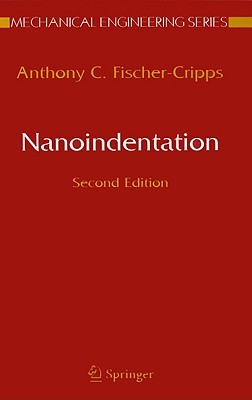
- We will send in 10–14 business days.
- Author: Anthony C Fischer-Cripps
- Publisher: Springer
- ISBN-10: 0387220453
- ISBN-13: 9780387220451
- Format: 15.8 x 23.1 x 2 cm, hardcover
- Language: English
- SAVE -10% with code: EXTRA
Reviews
Description
There has been considerable interest in the last two decades in the mechanical characterisation of thin film systems and small volumes of material using depth-sensing indentation tests. Usually, the principal goal of such testing is to obtain values for elastic modulus and hardness of the specimen material from experimental readings of indenter load and depth of penetration. But other properties such as residual stress, fracture toughness, and visco-elastic behavior may also be measured. The indentation technique can be used on both brittle and ductile materials where conventional testing may result in premature specimen fracture. The forces involved are usually in the millinewton range and measured with a resolution of a few nanonewtons while the depths of penetration are in the order of nanometres, hence the term nanoindentation.
This new edition of Nanoindentation includes a dedicated chapter on thin films, new material on dynamic analysis and creep, accounts of recent research, and three new appendices on nonlinear least squares fitting, frequently asked questions, and specifications for a nanoindentation instrument.
Nanoindentation Second Edition is intended for those who are entering the field for the first time and to act as a reference for those already conversant with the technique.
EXTRA 10 % discount with code: EXTRA
The promotion ends in 19d.13:38:32
The discount code is valid when purchasing from 10 €. Discounts do not stack.
- Author: Anthony C Fischer-Cripps
- Publisher: Springer
- ISBN-10: 0387220453
- ISBN-13: 9780387220451
- Format: 15.8 x 23.1 x 2 cm, hardcover
- Language: English English
There has been considerable interest in the last two decades in the mechanical characterisation of thin film systems and small volumes of material using depth-sensing indentation tests. Usually, the principal goal of such testing is to obtain values for elastic modulus and hardness of the specimen material from experimental readings of indenter load and depth of penetration. But other properties such as residual stress, fracture toughness, and visco-elastic behavior may also be measured. The indentation technique can be used on both brittle and ductile materials where conventional testing may result in premature specimen fracture. The forces involved are usually in the millinewton range and measured with a resolution of a few nanonewtons while the depths of penetration are in the order of nanometres, hence the term nanoindentation.
This new edition of Nanoindentation includes a dedicated chapter on thin films, new material on dynamic analysis and creep, accounts of recent research, and three new appendices on nonlinear least squares fitting, frequently asked questions, and specifications for a nanoindentation instrument.
Nanoindentation Second Edition is intended for those who are entering the field for the first time and to act as a reference for those already conversant with the technique.


Reviews